Travelling with Tribal Tracks is a wonderful experience. They take care of everything and you don't have to worry about anything!
Gordon GLocation
Difficulty
Accommodation and Meals
Guesthouse, Hotel
Duration
7 days
Meeting Point
Chania
Annual Leave
5 days
Group Size
Up to 16
Seasons
May to October
Walking Distance
50km approx
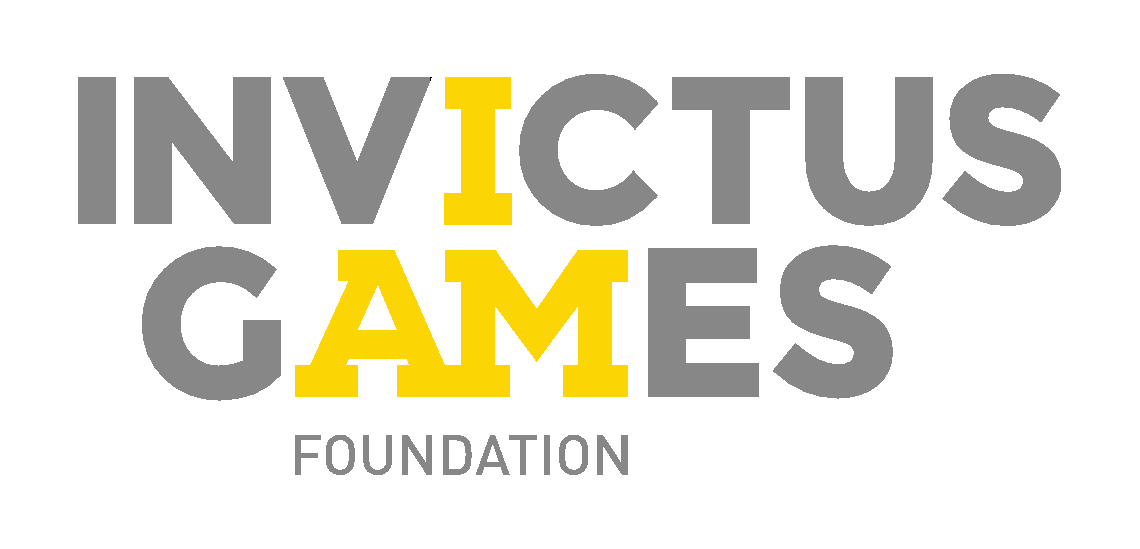
Meet Charlie, a director of, and one of the co-founders of Tribal Tracks.
Experience beautiful coastline treks peppered with remote coastal villages
Visit key locations of the Battle of Crete including memorials and museums
Climb the impressive Lefka Ora - The White Mountains
Trek the Samaria Gorge - one of the longest and most beautiful gorges in Europe
Stay in friendly, local guesthouses and enjoy the local cuisine
Explore Chania's Venetian Harbour, discovering hidden squares, Byzantine churches, and Ottoman mosques.
All the info you need
Trip Details
This Sea to Summit trek offers pristine coastline trails, stunning mountain landscapes, and traditional villages with a warm local welcome.
The southwest part of the island, characterised by the Lefka Ori mountains, dramatic gorges, secluded beaches, and clear blue waters, is more rugged and less visited. As we trek we learn that this region was the focal point of the Battle of Crete from World War II, where fierce fighting occurred between Allied forces and German paratroopers. The final day is spent finding out more about the Battle, with a military expert, visiting the important sites where we can pay our respects.
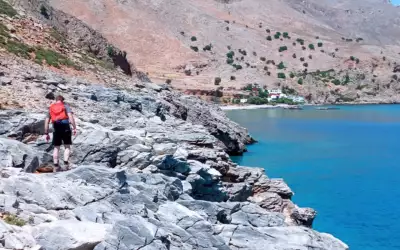
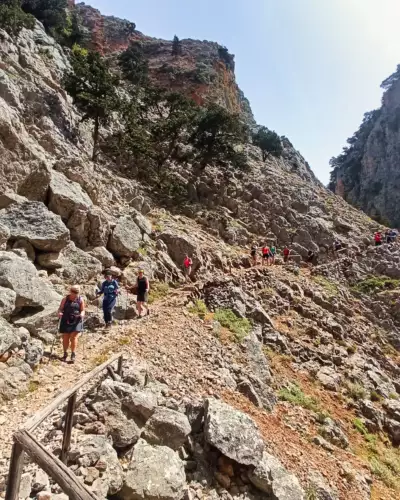
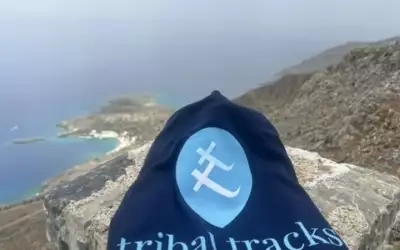
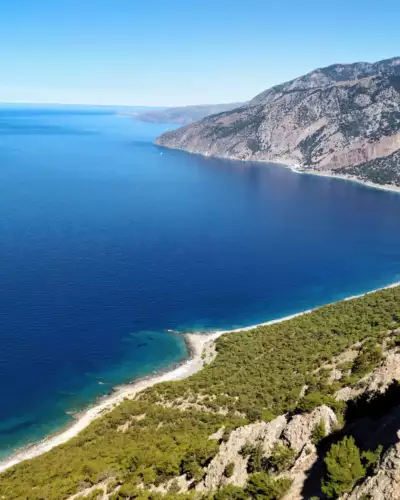
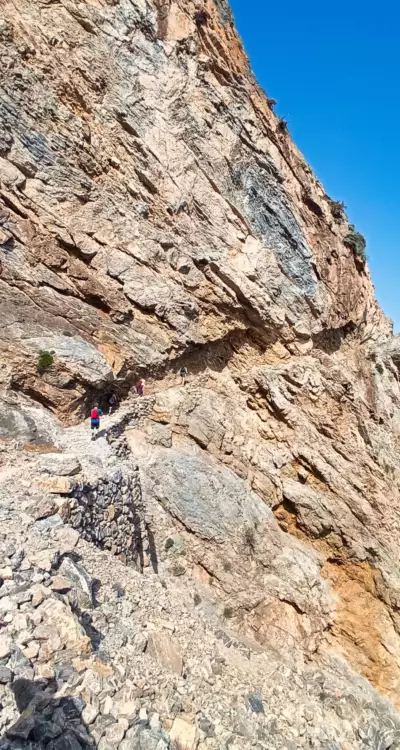
Trip Details
We fly into Chania, a picturesque town located on the northwest coast of the Greek island of Crete.
Chania's port was one of the main points for Allied reinforcements and supplies during the Battle of Crete; it was strategically vital for Crete's defence. German paratroopers landed near Chania on May 20, 1941 as part of a major airborne and amphibious operation during World War II- codenamed Operation Mercury (Unternehmen Merkur), the last airborne German assault in the Second World War. The following day, the Maleme Airfield in western Crete fell, ultimately overwhelming the defensive positions on the island.
We will be met by our local team and head to the southern coastal town of Hora Sfakion. We will stop enroute at the Historical War Museum in Askifou - https://www.warmuseumaskifou.com/en/about.html. This is a privately owned museum with a huge collections of memorabilia from WW2. This is run by the family of Georgios A. Hatzidakis who was 10yrs old when the Germans invaded Crete. We head onto Hora Sfakion and check into our hotel and prepare for our 'Sea to Summit' trek. There should be time for a quick swim in the Libyan sea before dinner.
Accommodation and Meals
Guesthouse and dinner
We start our trek from Hora Sfakion, a beautiful village nestled between the azure sea and the White Mountain range.
We begin our journey by trekking along the coastline towards Loutro, a small village only accessible by foot or boat. The first few km's are on coastal paths which have been cut into the rocks. In places there are fixed wires which are useful handrails, and it can get a little airy! We head towards Sweet Water bay, where, if you dig down into the sand you will find the spring water from the mountains. Above the bay there is a small Ottoman church, a perfect place to have lunch before heading onto Loutro.
Historically, the area was a lair for pirates who attacked passing ships. More recently, during the Battle of Crete, it served as a temporary hiding and regrouping spot for Cretan resistance fighters and British intelligence officers, as well as a supply route for aid and supplies for the resistance. While the majority of Allied forces were evacuated from Hora Sfakion, many escaped over the White Mountains, hiding in caves and local villages along the southern coast.
After lunch, we will begin climbing into the highlands of the Sfakia and will hike for several miles towards an old Ottoman fort, all the time enjoying the views across the Libyan sea and back towards the White Mountains. We descend into the mountain village of Anopoli where we stay for the evening.
During the course of the day, we will come across ancient ruins, Venetian fortresses, and Byzantine churches while being surrounded by breathtaking natural beauty.
Approximate distance 11km and total ascent 900m/descent 350m
Accommodation and Meals
Anopoli Guesthouse and full board
Leaving the village of Anopoli, we take a short transfer to Agios Ioannis, following a historical coastal track with amazing views of the Libyan sea.
Arriving in Agios Ioannis we descend to the coastline where we follow a track through pine forests, providing welcome shade. This coastal route is a combination of pebbled beaches and sand. We can enjoy a rest at the ancient chapel of St Paul where there is a small café and an opportunity to have a cold drink and a swim.
On the final parts of the trek, it is exposed and if it is sunny, it can feel very hot and will be hard going. We'll finish at the village of Agia Roumeli — one of the wildest regions of Crete with some of the rarest flora, fauna, and geology. We can relax on the pebble beach admiring the crystal clear Libyan sea.
There is the opportunity to have an early evening swim before dinner.
Approximate distance 10km and total ascent 14m/descent 779m
Accommodation and Meals
Agia Roumeli Guesthouse and full board
We will begin our trek from the village of Agia Roumeli, which marks the coastal entrance to the Samaria Gorge.
This famous gorge, which is 16km long, is known for its breathtaking scenery and towering limestone cliffs.
It was a critical escape route (to the coast) for those evading capture during the Battle of Crete, and a pathway for smuggling supplies. Knowledge of its steep cliffs and narrow passages made the ideal location for ambushes by the resistance fighters, giving the Cretan fighters a significant advantage over German troops.
We will walk the entire length of the gorge, admiring the rich variety of flora and fauna, and pass through what is known as the 'Iron Gates' — the narrowest point of the gorge between cliffs that tower over 300m high. The last 5km of the gorge route steepens with a number of switch back paths up to the exit gates. The river flows through the gorge and there are a number of small wooden bridges for crossing. Samaria Village is at the halfway point; it is here that the King of Greece and government officials hid when they fled to Crete in April 1941 before evacuating from the south coast to London.
We finish at Xiloskalo ('wooden staircase'), near Omalos and will take a short transfer to our guesthouse.
Approximate distance 16km and total ascent 2222m/descent 987m
Accommodation and Meals
Omalos Guesthouse and full board
Our challenge culminates at summit of Kouloule, standing 1631m above sea level.
Despite a day of ascent yesterday, we're not stopping there. We're pushing on to 1631m above sea level to Kouloule summit. This summit, like many of the other mountain tops in Crete served as important observation points during the Battle of Crete. Having control of this high ground meant having an advantage in monitoring enemy movements and coordinating defence strategies.
Departing on foot from our guesthouse we head up the old Shepherds trail up towards the ridge line. We start with a gentle ascent and then path steepens; the terrain is rocky and you need to really concentrate on this ascent route and pick your footing carefully. As you approach the ridge line there are impressive views across the Omalos plateau, over to Chania on the north coastline, and the Libyan coastline to the south. The final ascent up onto the ridge requires low level scrambling and at times you will need to use both your hands and feet, but there are plenty of places to grab hold of to help pull you up. When you get onto the top of the ridge it can be windy and it is very uneven terrain. From the summit we continue along the ridge line towards Kalergi Refuge where we will stop for lunch stop. From the refuge balcony there are incredible views across Samaria Gorge. There is a memorial to one of the Cretan shepherds, killed by the Germans, who was carrying messages across the mountains for the Allied troops
We follow the dirt road track down from the Refuge and pick up a track for the final descent to the Samaria. We will be collected by minibus and transfer back to our guesthouse to collect our luggage and then onward to travel to Chania.
Approximate distance 9km and total ascent 1009m/descent 1009m
Accommodation and Meals
3* Hotel Chania and full board
An educational and immersive delve into the Battle of Crete
Having completed our trek, we now embark on an educational tour, learning more about the Battle of Crete, and guided by a knowledgeable military historian. The experience will take us through significant locations and events of this dramatic World War II battle that have left a lasting impact on the island to this day.
We'll gain a deeper understanding of the strategies, challenges, and heroism that marked this conflict, all while exploring the historical sites where these events unfolded.
This evening we have a celebration dinner to mark our final evening together, and all that we have achieved.
Accommodation and Meals
3* Hotel Chania and full board
After breakfast, there will be time to do a little more exploring of the town of Chania and do some shopping before we have a final lunch.
The picturesque city of Chania, steeped in maritime history, includes the stunning Venetian harbour lined with colourful buildings and traders.
Accommodation and Meals
Breakfast and lunch
Trip Details
| From/To | Nights | Total Cost (includes non-refundable deposit) | Non-refundable Deposit |
Fundraising Commitment |
Places | Enquiry | |
|---|---|---|---|---|---|---|---|
|
Oct 03, 2024 Oct 09, 2024 |
6 | £0 | Full |
Trip Details
In a nutshell, almost everything!
This is what you will need to pay for/ buy/source yourself.
It is important that you read the itinerary carefully, and take account of the rating we have given it.
Although our challenges are not technical, they do require a good degree of physical fitness. The conditions will require stamina and strength, which you should recognise and train for. This will be a much better experience if you are fit and prepared. You should feel comfortable walking 6-8 hours per day.
In setting the maximum size of our groups, we take a number of factors into account.
Altitude, degree of difficulty, the terrain, the climate and time of year, all determine the maximum group size. Sometimes it will be 20, sometimes it will be 8-14, but safety is always our priority.
The minimum number to participate is 2. You will be accompanied by a Tribal Tracks UK Leader, Mountain Leader qualified, as well as supported by our local, in-country guides.
It is a requirement of Tribal Tracks booking terms and conditions that each supporter must hold their own travel insurance which covers the trip and the activities they are doing.
We advise you to put insurance in place as soon as possible. Your insurance must be valid and in date, covering the entire period that you are travelling for, including the return journey home. It should cover medical and personal accident risks, and should include repatriation costs and air ambulance or helicopter rescue services, where appropriate. We are happy to help you if you have any queries about this or have any difficulties.
Tribal Tracks has 100% Financial Protection and has a trust account with the Protected Trust Service, member number 5566.
This means that all client monies paid to Tribal Tracks are held in our dedicated trust account, which is supervised by an independent trustee. This means that in the very unlikely event that Tribal Tracks ceases to trade, your money is safe. For more information, please visit this link. Any flights booked for you by Tribal Tracks will be ATOL protected under our own ATOL certificate.
Tribal Tracks considers the safety of all of its participants and staff to be a top priority, and as such we have thorough safety systems in place.
In the event of an injury, we have an evacuation plan in place for all elements of the trek route. We do ask that you look after yourself during the trek in the following way, as this will help avoid unnecessary problems:
We know that the unexpected can happen.
While you are away, things can happen at home and people may need to get in contact with you. This can be tricky when you are in remote areas. So, shortly before departure, we provide you with an Emergency Procedure document to distribute to your nearest and dearest. This sets out how to contact Tribal Tracks and the steps Tribal Tracks will then take to get in contact with you.
It is really important that you are well prepared for your physical challenge and that you are confident that you will be able to fully participate.
Although our leaders are well trained to deal with different capabilities, if they have any concerns about someone’s ability to safely partake in the trek, or their impact on other people’s enjoyment, we authorise them to take necessary action which, in some circumstances, may involve asking someone to step out of the trek. Although this is a very rare occurrence, by booking this trip you agree to section 11 of our Booking Conditions which clearly states that our leaders have the authority to do this. In these circumstances, we will ensure anyone sitting out is safely provided for and offered alternative options where possible. Refunds will not be provided for activities missed and customers may be liable for additional costs incurred.
At Tribal Tracks, Responsible Travel is enormously important to us, and our commitment to responsible travel is evidenced in every itinerary that we prepare.
Core to our business is the belief that holidays can and should be enjoyable to the traveller but should be conducted in a socially, environmentally and economically responsible manner which brings benefit to local communities. This is implemented through a variety of measures which can be found in our Responsible Travel policy - http://www.tribaltracks.co.uk/responsible-travel-policy. We encourage you to read this and to play your own part in travelling responsibly.
Trip Details
This kit list is meant as a guide — it might not be crucial to purchase everything on this lisk, ask us at any point if you are unsure.
Trip Details
The trek is a challenge. We will be walking for a long time over sometimes challenging terrain with steep ascents and descents.
The best way to build endurance fitness is to start with some gentle walks and gradually build up both the distance and duration over the next few months. In the last 2 months, we would recommend to go out and do long days, ideally in the hills, to build up the strength in your legs. About a week before the trek, limit any training to short walks – you want to have fresh legs at the start!
For the trek you should be comfortable trekking between 6 - 8 hours per day, but remember we have all day to achieve the distances and will not be going at racing snake pace. It may sound obvious, but make sure that you are walking properly, hitting the ground with your heel first, then rolling onto your toe, which pushes you onto the next step (this will help reduce the risk of shin splints and tendon pulls). Walk with your head up, eyes forward and shoulders level.
It is a good idea to develop a level of cardiovascular fitness (exercising and strengthening your heart and lungs). This comes from running, cycling or swimming for between 20 minutes and an hour, and will really help develop your endurance fitness. Three sessions a week is normally advised, increasing time and distance over time.
Replicate conditions in training i.e., use all the kit you will be using and try your walking poles if you want to use them.
It is important to pack so that you know where everything is. Separating kit into different packing cubes, or even plastic bags can really help with this. You can pack by item (eg socks and pants in one cube, tops in another etc) or by day, putting your entire outfit for that day together in one place. Taking an extra bag or cube to separate dirty kit is a great idea.
You will have two bags on the trip - your main bag and your back pack.
You should operate on the basis that you will not have access to your main bag during the day and while you are trekking. This means that it is important to have everything you need in your back pack. Waterproofs should go in the bottom, together with an extra layer, sunscreen and sunglasses, plus hat and gloves (if you are in a colder climate). You should also have your water bottles, and any specific snacks, medicines or first aid items you want to take, such as zinc tape and blister plasters. Baby wipes/toilet roll and nappy sacks are also essential for going to the toilet while you are trekking - we will explain more in the pre-departure briefing!
In the event of an injury, we have an evacuation plan in place for all elements of the trek route. We do ask that you look after yourself during the trek in the following way, as this will help avoid unnecessary problems:
We will brief you in the pre-departure briefing as to the catering specifically for your trip. However, as a guide, each morning you will be provided with a very filling local breakfast, usually accompanied by tea or coffee. Lunch will be during your trek and will be prepared by the team of cooks or we will utilise local restaurants or teahouses. Food will always be ample and tasty. If wild camping, dinner will be in the dining tent and will be traditional, freshly prepared food. If you are staying in a hotel or teahouse, dinner will be served there. Water, tea and coffee will be served and alcohol will usually not be available, although there will be some exceptions. We will provide 4 litres of drinking water per person per day. You will need to fill up 2 litres at breakfast and another 2 litres at lunchtime.
Please ensure that you have notified us before departure if you have any specific dietary requirements or allergies as we can cater for most.
Please inform us of any dietary requirements or allergies before you travel, and preferably at the time of booking. We can cater for almost all diets, so please just let us know. We can't cater for you if we don't know what you need!
There will be early morning starts, typically around 0600 - 0700hrs, so that the team can set off on the trek in good time. It is important that you pack up your kit before breakfast and leave your bag outside your tent or accommodation so that the crew can load them onto the jeeps and/or mules. There will be a freshly cooked lunch provided on your trek route. The aim is to get into camp before sunset if possible, when you can enjoy a hot drink and snacks. It is important that you change into your thermals and put layers on when you get into camp as the temperatures can drop sharply and you need to keep warm.
For up-to-date vaccinations information please visit the NHS website ‘Fit for Travel’ at: http://www.fitfortravel.nhs.uk. The Tribal Tracks team are travel professionals, but we are not medical experts, and we would encourage you to visit your GP or travel nurse to discuss vaccination requirements. Please remember to take your itinerary with you so that they can see where you will be travelling. You should make an appointment at least 3-4 months before you travel.
In addition, please note that information on vaccinations can change at short notice; we recommend that you contact your Medical Professional or a Travel Health Clinic at least 8 weeks prior to departure for the most up to date information.
We recommend that you bring a multi-region adapter plug with you. There will be no facility to recharge electrical items on the trek, so we recommend you bring a power bank to top up the charge. We also recommend putting your phone on Airplane mode during the day to save on power.
Using your mobile overseas can sometimes attract unwelcome, very high tariffs. We recommend that you check with your network provider before you travel, but if in doubt, keep your phone switched to Airplane mode and use it only when there is WiFi. Reception can also be patchy, and unreliable, particularly in remote areas, which is why we carry a satellite phone with us. Please let your nearest and dearest know about this, and warn them that you may not be able to be in regular contact.
We ask that your luggage is kept to the absolute minimum. We will tell you the weights that you should not exceed, but usually, your main bag should not exceed 23kgs in weight.
It is important that you wear, or take your trekking boots with you in your hand luggage on the flight, as they are vital for the trek and cannot be replaced in the event of lost luggage.
We recommend leaving behind items such as high value jewellery, watches etc. Your passport and money should be always kept on you.
Trip Details
If you want to alter the length of this trip, or want to make any changes or add any other activities, just let us know, we are happy to adapt where possible.
Let’s get you on the right track!